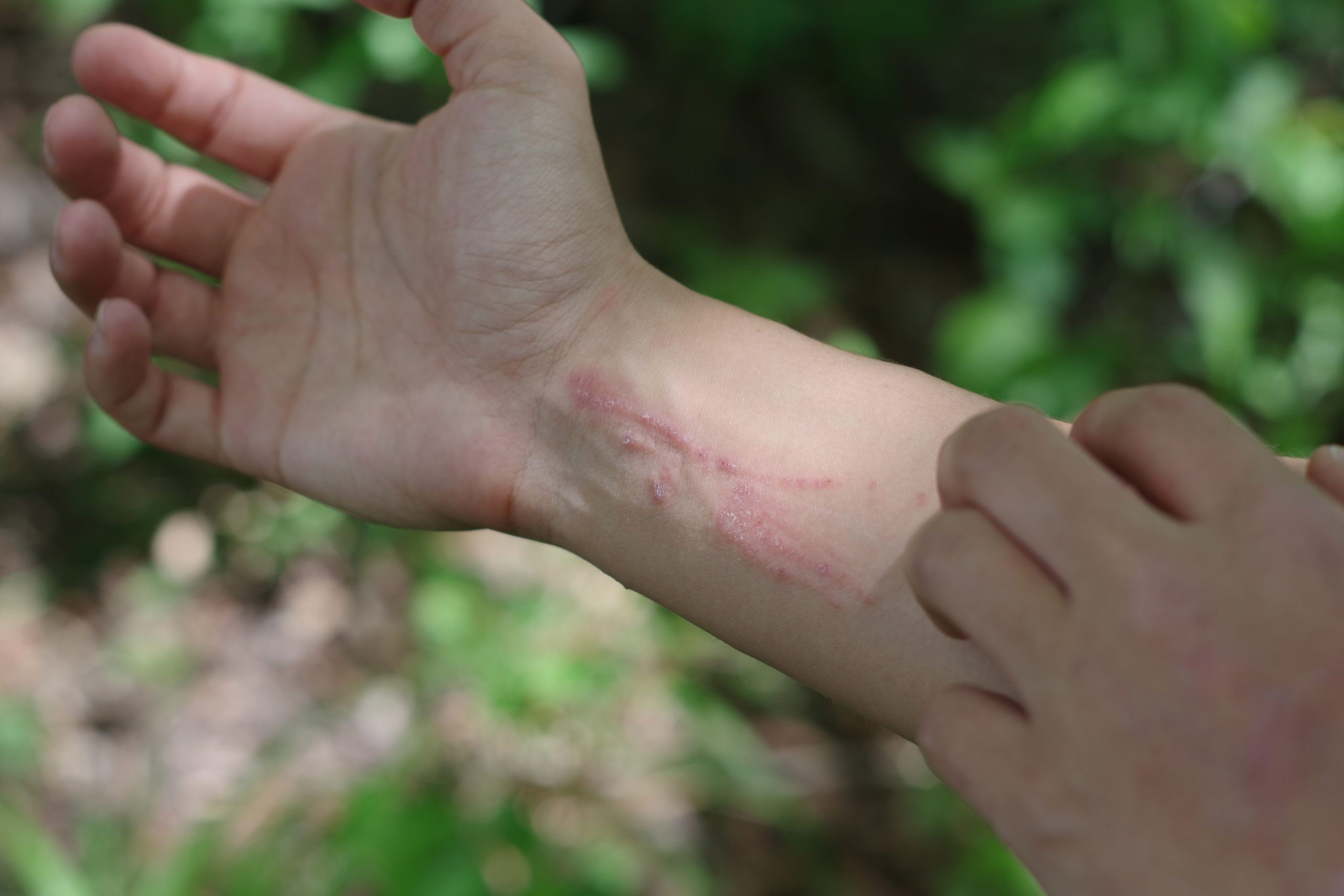Poison ivy is a three-, five- or nine-leaved, vined plant that grows naturally in wooded or marshy areas of North America. It contains an oil called urushiol, which causes an allergic reaction on the skin if you come in contact with it. According to the American Skin Association, 10-15% of people are severely allergic to poison ivy. Anyone in this category should skip home treatments and go directly to the nearest urgent care facility.
A poison ivy rash is characterized by a red, itchy, and blistering rash on exposed skin. These annoying blisters can break and leak liquid (pus), which puts you at risk for infection. It’s important to understand how to properly care for this type of skin rash and use proven poison ivy rash treatment at home.
Five at-home remedies for poison ivy
Follow these steps for safe and effective poison ivy rash treatment at home.
- Wash the rash
This is really a two-step process. Before washing with soap and water, it’s important to wipe the affected area with rubbing alcohol. Not only will this wipe away most of the urushiol from your skin, but it will also neutralize it.Also, if rubbing alcohol is used within 4 hours of exposure, it will draw urushiol out of the skin. Hikers, climbers and backpackers should always carry alcohol wipes for this reason. Next, wash with a mild soap and lukewarm water(hot water can irritate the rash and make it worse). This will help further reduce the chance or severity of the allergic reaction. - Soak in a bath
Once the rash develops, taking short, lukewarm baths can help treat any itchiness from a poison ivy rash. Just be sure you’ve cleaned the area thoroughly beforehand, as urushiol can spread to other parts of the body or from personto person. Taking a lukewarm oatmeal bath for 15-30 minutes every 8 hours can help dry out leaking blisters and soothe redness and irritation. - Apply an over-the-counter anti-itch creamHydrocortisone cream and calamine lotion can be used topically (on the skin) to help alleviate itching. Hydrocortisone creams contain topical steroids to reduce swelling,redness and irritation. Calamine lotion contains zinc oxide and astringents, which can help soothe itchiness. If you don’t have these products handy, you can also try a baking soda paste (mix 3 tsp. baking soda and 1 tsp. water),cold compress or aloe vera gel.
- Take an oral antihistamine
Oral antihistamines, like Zyrtec or Allegra, can be used during the day to block the body’s production of histamines and help stop the symptoms of swelling, redness and itchiness.Benadryl, which induces drowsiness, is more helpful for managing poison ivy symptoms at night so you can rest more easily.Avoid antihistamine creams, benzocaine, neomycin and bacitracin, as these can further irritate the skin. - Apple cider vinegar
Apple cider vinegar is a natural anti-inflammatory that can help soothe the rash as well as relieve pain and redness. This remedy should only be used on poison ivy that is not activelyinflamed or leaking fluid. Avoid applying it to freshly inflamed skin, as it can cause pain or discomfort. Place a few drops of diluted apple cider vinegar on unblistered skin first to see if it causes additional pain, discomfort orirritation.
The good news is a poison ivy rash will typically clear up on its own in 1-3 weeks. If at-home remedies do not alleviate symptoms, or if you notice your symptoms getting worse, visit Amory Urgent Care for fast and effective poison ivy treatment. Walk-ins welcome 7 days a week from 8 a.m. – 7 p.m.

